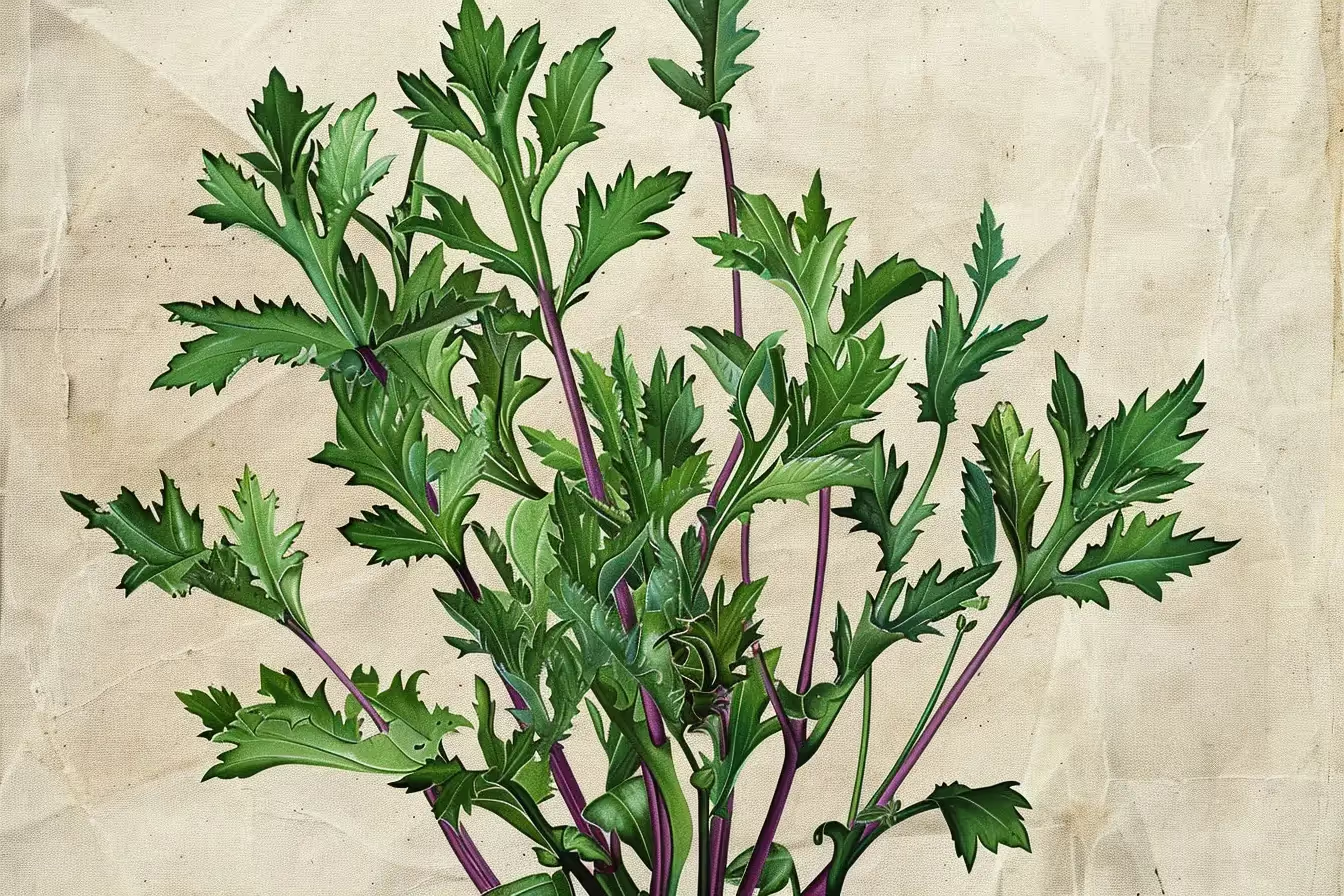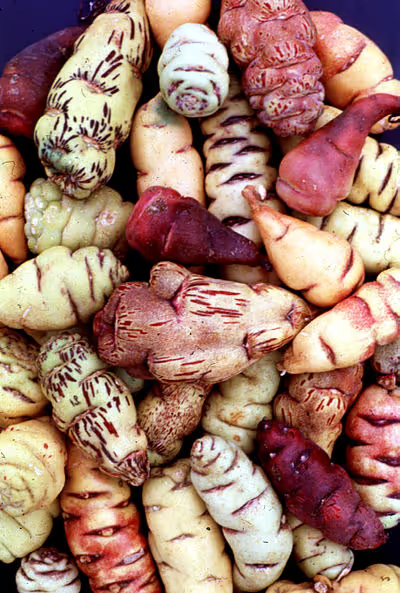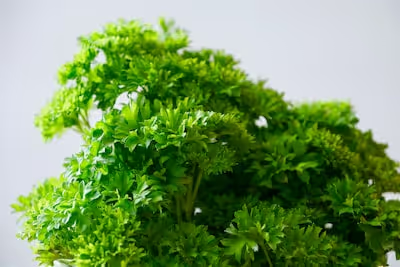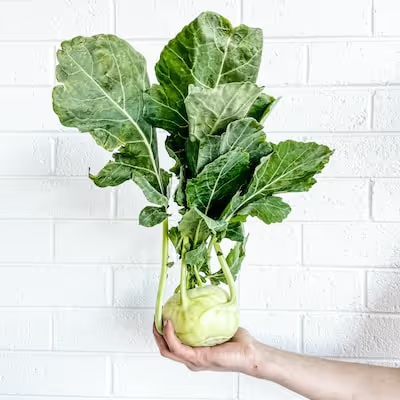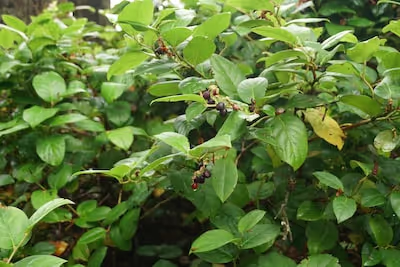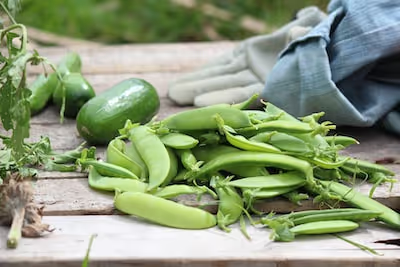Growing Arugula: How to Grow a Healthy, Flavorful Harvest
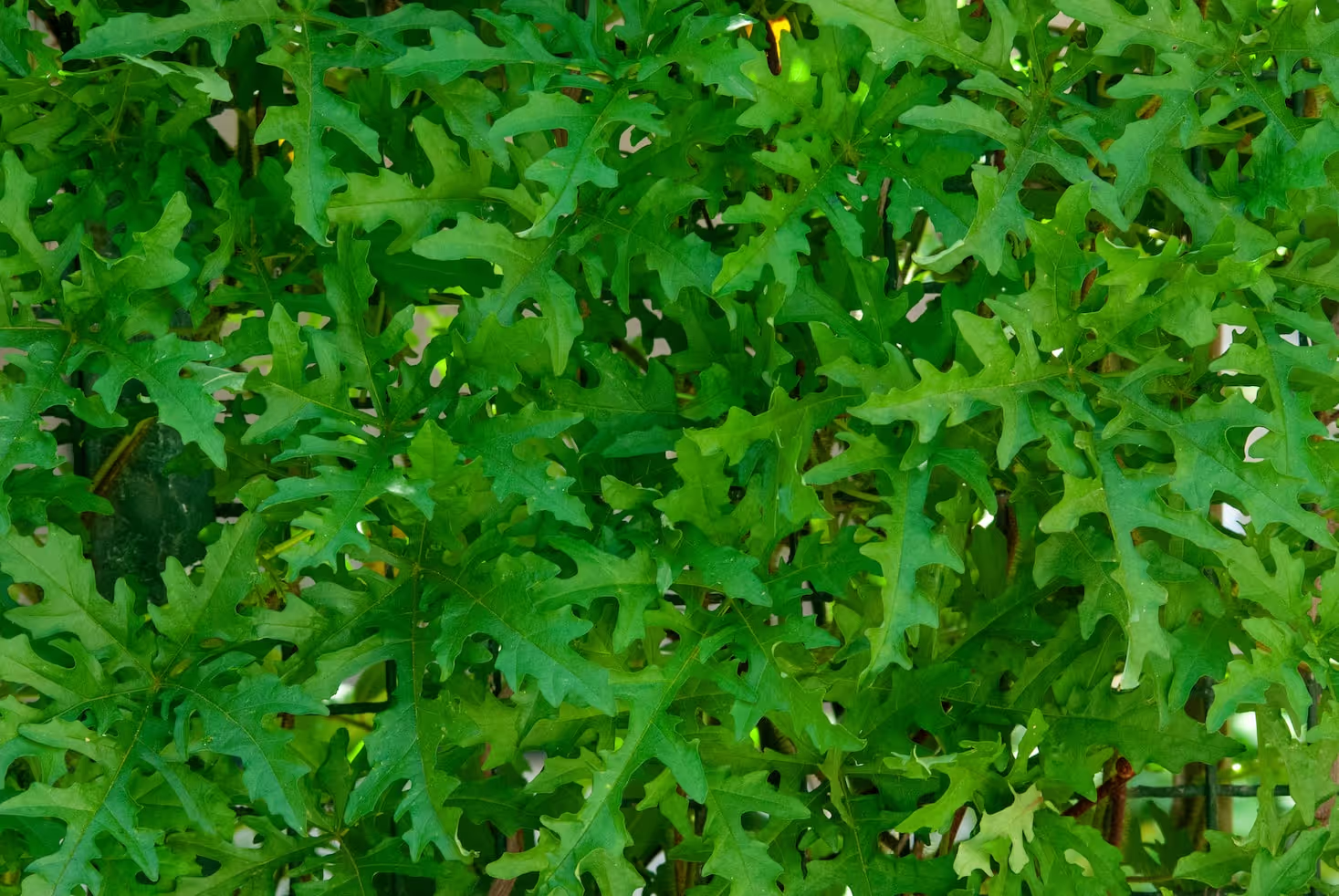
Growing Arugula
Growing arugula rewards gardeners quickly: plant seeds directly in cool soil, keep beds evenly moist, and harvest peppery leaves in just four weeks. Growing arugula fits small spaces beautifully—pots and window boxes welcome it gladly. Follow these simple tips, and you'll soon have fresh, flavorful greens ready to spice salads, pizzas, and sandwiches. Here's how easy it is to cultivate your own arugula patch.
Cheatsheet: Quick Steps to Lush Arugula Beds
🌱 Site & Soil
- Full sun or partial shade
- Loose, rich, well-drained soil pH 6-7
- Mix in compost before planting
📆 Sowing Dates
- Direct sow early spring or late summer (40–75℉ / 4–24℃)
- Sow every 2–3 weeks for continuous leaves
🌧️ Water & Care
- Keep soil moist, not soggy
- Mulch to prevent drying & bitterness
- Thin to 4 in/10 cm for airflow
🌿 Harvest & Use
- Pick leaves at 2–3 in (5–8 cm), 20–40 days after sowing (baby or mature)
- Cut outer leaves, let plants regrow ("cut and come again")
- High in vitamin K, folate, cancer-fighting glucosinolates
🛠️ Tools and Products You'll Need
- Trowel
- Watering can or drip hose
- Garden scissors
- Compost or all-purpose organic fertilizer
- Row cover (for flea beetle protection)
🐞 Pest & Bolt Control
- Protect seedlings from flea beetles & slugs
- Harvest before flowering for best flavor
- Shade in hot weather to slow bolting
- Prepare soil with compost and loosen to 8 in/20 cm deep.
- Sow seeds ¼ in/0.5 cm deep, 1 in/2.5 cm apart.
- Water gently until seedlings emerge (3–7 days).
- Thin to 4 in/10 cm for leafy growth.
- Mulch and water regularly.
- Harvest when needed; cut outer leaves first.
Fact: Arugula matures in as little as 21 days. Quick, nutritious, and fits small gardens or containers.
-
Growing Arugula: How to Grow a Healthy, Flavorful Harvest
I grow arugula for speed and sting, because few crops go seed to skillet faster. A cold night gives the leaves a sweeter edge and a pepper snap that wakes up the whole plate.
Timing, temperature, and light
Sow arugula in cool weather, with soil at 45 to 70 F or 7 to 21 C, and you’ll see cotyledons in 3 to 7 days. I start 2 to 4 weeks before the last spring frost, then again 6 to 8 weeks before the first fall frost.
Give full sun in spring and fall, then shift to light afternoon shade once days top 75 F or 24 C to slow bolting. In mild zones, a low tunnel with row cover keeps it moving all winter.
Key stat: Baby leaf harvest in 20 to 25 days, mature leaves in 35 to 50 days. Source: University of Maryland Extension and Johnny’s Selected Seeds trial notes.
Soil and bed prep
Arugula likes a loose, living bed with steady nutrients and pH 6.0 to 7.0. I mix in 2 to 3 cm of finished compost and a light pre-plant feed, then rake to a fine tilth.
Aim for about 1 inch or 25 mm of water per week. Dry spells toughen leaves and push plants to bolt.
Sowing methods that work
Direct seed 0.25 inch or 6 mm deep. For heads, space 4 inches or 10 cm apart in rows 8 to 12 inches or 20 to 30 cm.
For baby leaf, broadcast densely in a 7 to 10 inch or 18 to 25 cm band and thin by harvesting. Succession sow every 10 to 14 days for a continuous cut.
Fertilizing without blowing the flavor
Arugula is a quick feeder, but heavy nitrogen can make it watery and bland. I side dress with a balanced organic feed after the first cut, then water in with fish or seaweed at half strength.
Cold soils slow nutrient uptake, so I warm spring beds with black fabric for a week before sowing. Flavor thanks you later.
Heat, daylength, and bolting control
Long days and heat trigger flowering. I hedge with slow-bolt varieties, tight spacing for baby leaf, and 30 percent shade cloth once nights stay above 65 F or 18 C.
Keep plants evenly moist and harvest often to hold them in vegetative mode. If a plant starts to throw a bud, cut it back hard and enjoy the side shoots.
“Arugula prefers cool conditions and will bolt as temperatures rise.” Source: UC Master Gardener resources and RHS vegetable guidelines.
Pest pressure and clean leaves
Flea beetles leave shotgun holes on tender leaves. I cover beds at sowing with insect netting and pull it only to harvest.
Aphids ride in on heat and stress. Strong overhead rinse early in the day, then lady beetles or a light soap spray in the evening if needed.
Slugs like dense baby stands. Beer traps work, but copper tape on container rims saves me more time.
Rotate away from brassicas for 3 years to dodge soilborne issues like clubroot. Water early, give airflow, and downy mildew rarely shows.
Netting reduces flea beetle damage on leafy brassicas by over 80 percent in trials. Source: University of Minnesota Extension vegetable IPM summaries.
Harvest, wash, and storage
I cut baby leaf as a swath with a sharp knife, leaving a 1 inch or 2.5 cm stub for regrowth. For mature plants, I pluck outer leaves or cut the whole rosette above the crown.
Harvest at daybreak, rinse in cold water, spin dry, and chill at 34 to 38 F or 1 to 3 C with high humidity. You’ll get 5 to 7 days in the crisper if leaves are dry.
Flavor tuning like a chef
Cool nights increase sugars, even in peppery greens. Mild water stress sharpens bite, but too much gives harshness, so I flirt with it, never commit.
I pair late fall leaves with citrus and oil, and spring leaves with strawberries and fresh cheese. The plate tells you what the bed is doing.
Varieties I trust
- Astro: Fast, broad leaves, mild in spring, my pick for baby leaf.
- Esmee: Beautiful serration, great texture, slow to bolt for a standard type.
- Apollo: Upright habit for clean harvests and tidy regrowth.
- Speedy: True to name in cool weather, best as baby.
- Sylvetta or Wild Rocket (Diplotaxis tenuifolia): Slim leaves, intense flavor, strong heat tolerance.
- Wasabi: Punchy and fun in small doses, lovely scattered over grilled fish.
- Ice-bred types: Selected for cold hardiness; winter salads stay lively.
Containers, balconies, and indoor lights
Use a 6 inch or 15 cm deep pot with a peat-free mix and 20 to 30 percent compost. Bottom water to keep leaves clean.
Under LEDs, set 14 to 16 hours of light, a PPFD near 200 to 350 µmol m⁻² s⁻¹, and temps of 60 to 68 F or 16 to 20 C. Harvest every 5 to 7 days for baby cut-and-come-again.
Hydroponic notes for the curious
Maintain solution at EC 1.2 to 1.8 mS cm⁻¹ and pH 5.8 to 6.2. Keep water at 65 to 68 F or 18 to 20 C and sanitize tools to prevent pythium.
NFT channels with 5 inch or 12 cm spacing push consistent, clean baby leaf. Dial DLI near 12 to 14 mol m⁻² d⁻¹ for compact growth.
Commercial hydro trials report arugula finishing in 21 to 28 days with EC near 1.6 and pH 6.0. Source: Cornell Controlled Environment Agriculture and University of Arizona CEA guidance.
Companions, rotations, and soil sanity
I tuck arugula between carrots and onions to confuse pests and save space. Avoid following broccoli, cabbage, or mustards to reduce disease carryover.
If clubroot lurks, lime to the high end of the range and plant wild rocket instead. Better yet, grow in fresh container mix for a season.
Common problems, quick fixes
- Bitter leaves: Heat stress or age; water deeply, pick younger, switch to wild rocket in summer.
- Shot holes: Flea beetles; cover early and try a fast baby-leaf cut to outpace them.
- Yellowing: Low nitrogen or waterlogging; side dress lightly and improve drainage.
- Bolting: Long days; harvest hard, add shade cloth, and resow a fresh block.
Food safety for salad greens
Skip fresh manure on beds headed for baby leaf. If you use manure, apply and incorporate 120 days before harvest.
Wash hands, use clean knives, and chill greens immediately. Simple habits keep salads crisp and safe.
Yield expectations and bed math
A 1 by 8 foot or 30 by 240 cm baby band gives me two heaping salad bowls per week for a family of four. With tight successions, that same strip carries the kitchen from March to December in zone 7.
Trial farms report 0.5 to 0.75 lb per square foot per cut for baby leaf under ideal conditions. Source: Johnny’s and UMass vegetable program summaries.
Shopping list and gear that earns its keep
- Seeds: One quick standard and one wild type for heat insurance.
- Row cover or insect netting: Stops flea beetles before they start.
- 30 percent shade cloth: Summer insurance that tastes like spring.
- Soil test kit: Targets pH and nutrients without guessing.
- Stainless harvest knife and salad spinner: Clean cuts, crisp leaves, zero grit.
- Balanced organic fertilizer: Light feeds that keep flavor tight.
Why Growing Arugula keeps paying off
It trains your timing, rewards careful water, and forgives a lot with speed. I plant it like a metronome in my beds, and the kitchen never waits for a salad.
Sourced guidance I trust
- University of Maryland Extension vegetable profiles on leafy greens.
- UC Master Gardener Program seasonal crop tips and IPM notes.
- Royal Horticultural Society advice for rocket and salad crops.
- Cornell and University of Arizona Controlled Environment Agriculture bulletins.
- Johnny’s Selected Seeds and UMass vegetable program trial summaries.
Frequently Asked Questions About Growing Arugula
What soil conditions help arugula thrive?
Arugula favors well-draining, fertile soil enriched with organic matter like compost. Aim for a neutral to slightly acidic soil with a pH between 6.0 and 7.0 to boost vigorous leaf production.
How much sunlight should arugula plants receive?
Arugula thrives in sunny locations but tolerates some shade. Ideally, provide your plants with 4 to 6 hours of sunlight daily, balancing bright light with periods of gentle shade.
How frequently should I water my arugula?
Water your arugula consistently, maintaining evenly moist—but not waterlogged—soil. Typically, watering once or twice weekly to achieve approximately 1 inch (2.5 cm) of water is sufficient, adjusting based on rainfall and temperature.
Can I plant arugula in containers?
Absolutely—the shallow roots of arugula adapt easily to container gardening. Choose containers 6 to 8 inches (15-20 cm) deep with proper drainage, and place them in locations receiving enough sunlight.
When is the ideal time to harvest arugula leaves?
Begin harvesting outer leaves once they reach 2 to 3 inches (5-7.5 cm) long, within 4 to 6 weeks after planting. Picking leaves regularly encourages continuous growth and prevents premature flowering (bolting).
How can I prevent my arugula from bolting too soon?
Reduce the chance of early bolting by planting earlier in spring or later in summer, maintaining consistent soil moisture, and protecting plants from prolonged heat exceeding 75°F (24°C).
Is arugula suitable for succession planting?
Yes, planting seeds every 2 to 3 weeks ensures a steady supply throughout the growing season. This practice—known as succession planting—maximizes crop availability and maintains leaf quality.
Are pests problematic while growing arugula?
Common pests include flea beetles and aphids, which chew holes or sap nutrients from leaves. Combat them naturally by using row covers, applying beneficial insects like ladybugs, or gently spraying plants with water or organic insecticidal soap.
Growing arugula rewards you with quick, peppery leaves that put grocery store greens to shame. With a little sunlight, steady moisture, and soil that drains well, this crop thrives in both spring and fall. Don’t be afraid to snip young leaves early—arugula tastes best when harvested small and tender. Watch for bolting in warm weather, and sow new seeds every few weeks for a steady supply. Pair your arugula patch with other cool-season favorites—if you’re looking to expand your salad game, check out how to grow lettuce at home. At the end of the day, growing arugula is about keeping things simple and fresh. Give it a go, and your salads will thank you.
The Money Saver's Guide to Growing Arugula
Buy Seed in Bulk
Bulk arugula seeds cost 60–80% less per gram compared to small packets. Store extra seed refrigerated in airtight jars to maintain viability for up to 4 years.
Reusable Soil Mix
- Combine compost, garden soil, coconut coir, perlite (2:2:1:1 ratio).
- After harvest, refresh used mix with compost (20%) to regenerate nutrients.
- Average savings: $40–$60 (€37–€56) per growing season versus store-bought mixes.
Succession Planting for Continuous Yield
- Plant new rows every 2–3 weeks, harvesting leaves at 3–4 inches (7–10 cm).
- Reduces store-bought greens expenses by up to 50%.
Cost-Effective DIY Pest Control
- Deter flea beetles using floating row covers or fine-mesh insect netting.
- Homemade insecticidal soap (1 tbsp mild soap per quart/liter water) handles aphids economically.
Seed Saving
Reserve healthiest plants to flower, harvest ripe pods, dry 2 weeks, then store seeds labelled in sealed envelopes. Yearly seed saving reduces gardening costs by up to 30%.
Pot-to-Plate Efficiency
Harvest leaves just before meals to reduce nutritional loss. Arugula furnishes vitamin K, calcium, folate, and antioxidants more economically and nutritionally than supermarket greens, enhancing budget and health simultaneously.
Find out which plants will thrive in your garden!
Answer a few fun questions and get custom plant recommendations perfect for your space. Let’s grow something amazing together!

start your season
